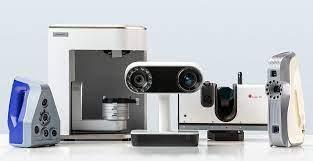Introduction
The advent of 3D scanning technology has opened up a world of possibilities, from precision engineering and healthcare to art and entertainment. As these devices become increasingly accessible, one critical factor influencing their adoption is the price. In this article, we will explore the diverse range of 3D scanner prices, shedding light on the factors that influence them and helping you make informed decisions when considering a purchase.
- Understanding 3D Scanner Pricing
3D scanner prices can vary widely, reflecting differences in technology, capabilities, and intended applications. Here are some of the key factors that influence the cost of 3D scanners:
- Technology Type: Different 3D scanning technologies, such as laser, structured light, and photogrammetry, have varying levels of complexity and accuracy. Laser scanners, known for their precision, tend to be more expensive compared to structured light scanners, which are generally more affordable.
- Scanning Range and Accuracy: The scanning range and level of accuracy required by the application impact the scanner's price. High-precision scanners with long-range capabilities are more costly due to their advanced components.
- Portability: Portable 3D scanners, designed for on-the-go use, often come at a premium price compared to stationary or desktop models.
- Scan Speed: Faster scanning speeds usually command a higher price. Industries requiring quick data acquisition, such as manufacturing, may opt for pricier, high-speed scanners.
- Resolution: The level of detail a scanner can capture, measured in dots per inch (DPI) or points per millimeter (PPM), influences its cost. High-resolution scanners are essential for applications like dental prosthetics and fine art reproduction.
- Brand and Manufacturer: Established brands with a history of quality and reliability often price their products higher than lesser-known competitors.
- Price Ranges in the 3D Scanner Market
The 3D scanner market caters to a wide range of budgets. Here's an overview of the typical price ranges you can expect to encounter:
- Entry-Level Scanners ($200 - $2,000): These scanners are suitable for hobbyists, educators, and small businesses. They offer basic scanning capabilities and are often used for simple tasks like 3D printing or basic design projects.
- Mid-Range Scanners ($2,000 - $10,000): Mid-range scanners are more versatile, providing better accuracy and faster scanning speeds. They are commonly used in industries such as healthcare, architecture, and product design.
- Professional-Grade Scanners ($10,000 - $50,000+): Professional-grade 3D scanners are designed for serious applications like aerospace, automotive, and healthcare. They offer high precision, accuracy, and often come with advanced features like color scanning.
- Industrial Scanners ($50,000 - $500,000+): These scanners are top-of-the-line, capable of handling large-scale industrial applications. They offer exceptional precision, long-range scanning, and are used in fields like manufacturing and construction.
III. Making an Informed Choice
When considering a 3D scanner purchase, it's crucial to assess your specific needs and budget carefully. Here are some tips for making an informed choice:
- Identify Your Application: Understand the primary purpose of the scanner, whether it's for prototyping, reverse engineering, quality control, or art-related projects.
- Consider Future Needs: Anticipate how your scanning needs might evolve in the future. Investing in a scanner that can accommodate future requirements can save you money in the long run.
- Research Brands: Look into reputable manufacturers and read reviews to ensure reliability and customer support.
- Demo and Test: Whenever possible, try out different scanners to assess their performance and ease of use. Many manufacturers offer demos or trial periods.
- Budget Wisely: Allocate your budget based on the importance of accuracy, speed, and other factors in your specific application.
Conclusion
The price of 3D scanners is as diverse as the applications they serve. While entry-level models can be budget-friendly for hobbyists and small businesses, professional-grade and industrial scanners come with a higher price tag, offering exceptional precision and capabilities to meet the demands of specialized industries. Making an informed choice requires a thorough understanding of your scanning needs and a careful evaluation of the features and capabilities offered by different models. Ultimately, investing in the right 3D scanner can lead to significant gains in productivity, innovation, and the quality of your work.

